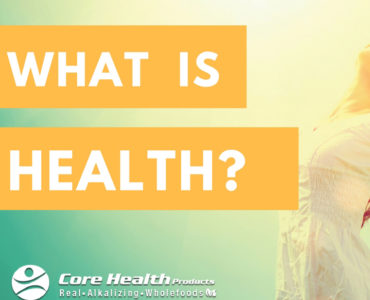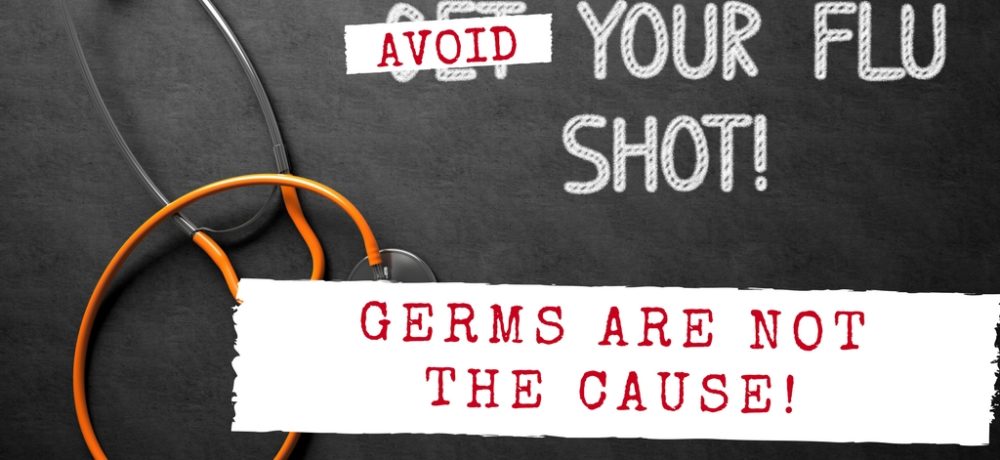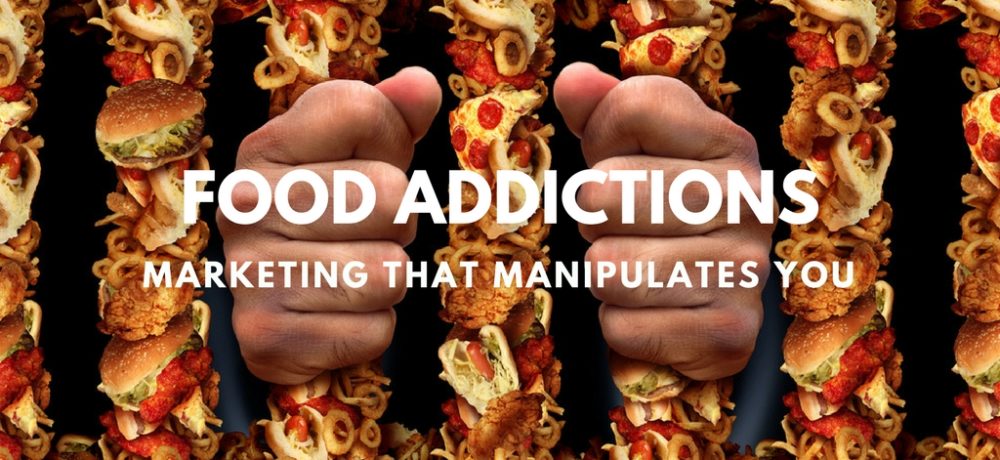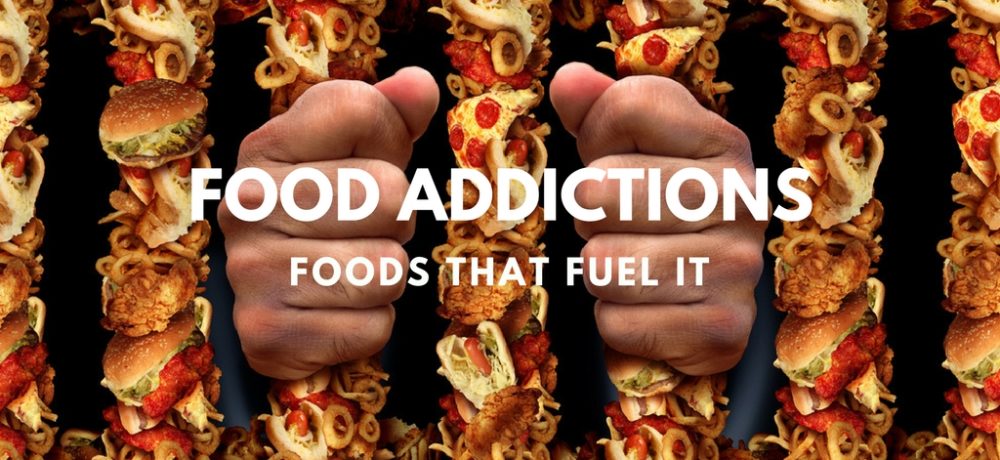FAT.
We have become accustomed to think that to be healthy and manage our weight, that the consumption of fat must be cut down to a minimum. Since the early 20th century there has been a big push towards consuming a low fat diet to address heart disease and a plethora of other illnesses. This shift in America has lead us down a path of higher disease rates, increased obesity, rising mental health diseases, auto-immune disorders, and the list goes on. The complexity of this topic cannot be reduced to just one cause, however, the fats we are consuming and the fats we are not consuming is a part of the problem regarding the increase of disease in America today and around the world.
History On Fats Gone Bad
At the beginning of the 20th century a man whose name is Ancel Benjamin Keys who earned a PhD in biology and physiology developed a theory called, “The Diet-Heart Hypothesis.” He was convinced that high LDL (low density lipoprotein) cholesterol levels is the root cause of heart disease due to high consumption of saturated fat found in animal foods. So he and other scientists and doctors began looking at the overall serum cholesterol levels in the blood of individuals as the biomarker risk factor for heart related diseases.
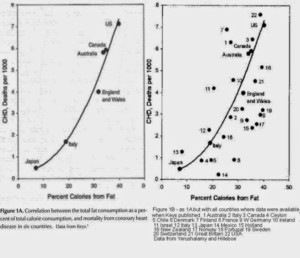 The Diet-Heart hypothesis was supported by Keys’ 1956 epidemiological study called, “The Seven Countries Study.” He was given a $200,000 grant from the US Public Health Service, which was one of the largest grants ever given to any study like this in nutrition science history. The study consisted of 12,700 middle-aged men mostly from rural populations in Italy, Greece, Yugoslavia, Finland, the Netherlands, Japan and the United States.
The Diet-Heart hypothesis was supported by Keys’ 1956 epidemiological study called, “The Seven Countries Study.” He was given a $200,000 grant from the US Public Health Service, which was one of the largest grants ever given to any study like this in nutrition science history. The study consisted of 12,700 middle-aged men mostly from rural populations in Italy, Greece, Yugoslavia, Finland, the Netherlands, Japan and the United States.
The problematic part of this study is the fact that it was done post WWII from 1958 to 1964. A time when there was tremendous transition in the Mediterranean region, so countries like Italy, Greece and Yugoslavia experienced extreme poverty. This effected what the people of these countries consumed which would effect the study’s results. This study is just one example of how research can be twisted to support a specific ideological perspective and support this new paradigm that fat, especially, saturated fat causes disease.
During this time there were numerous scientists and doctors who conducted studies that revealed the poor science and presuppositions of Keys’ study. You might be thinking that this was overlooked as well and you would be correct. Key’s had tremendous influence in the science and nutrition world’s and was able to get his study published in a 211 page monograph published by the American Heart Association (AHA) in 1970. Books and hundreds of articles were written afterwards by Key’s and his team who conducted the Seven Countries study and by 2004, there were close to one million references to this study in the medical literature.
This new dietary view on “low-fat” consumption, particularly saturated fat from animal foods, became the gold standard for the nutrition and medical establishments, in other words, the new nutrition dogma. Even the National Institute of Health (NIH), Food and Drug Administration (FDA) and the United States Department of Agriculture (USDA) was in full support of the Diet-Heart Hypothesis.
Another historical thread in 20th century America on fat and disease that added fuel to the fire putting healthy fats on trial, especially, saturated fats, was the introduction of fat alternatives. If saturated fat from butter, tropical fats, and animal fats caused heart disease and other diseases, then the food industry had to find a way to make products that would allow us to continue to make baked goods, fry foods, butter our breads, etc. Products that have a long shelf-life and do not go bad quickly to replace the so-called unhealthy saturated fats.
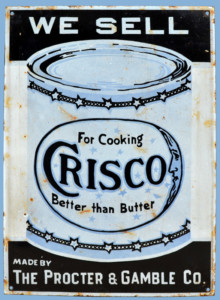 As early as 1911, there was a new product on the market called, “Crisco.” Crisco and other fat alternatives like margarine provided us with the benefits of cooking, frying and baking that butter and coconut oil did without the saturated fat. These fat alternatives also had a long shelf-life and did not go bad quickly. It was a dream come true for many Americans. The marketing on these products gave the consumer the impression that, “I can still have my cake and eat it too and help my health at the same time, what a bargain!”
As early as 1911, there was a new product on the market called, “Crisco.” Crisco and other fat alternatives like margarine provided us with the benefits of cooking, frying and baking that butter and coconut oil did without the saturated fat. These fat alternatives also had a long shelf-life and did not go bad quickly. It was a dream come true for many Americans. The marketing on these products gave the consumer the impression that, “I can still have my cake and eat it too and help my health at the same time, what a bargain!”
With the introduction of products like Crisco and margarine to the marketplace, along with it came what is called, “hydrogenated and partially hydrogenated oils.” These new fats have different fatty-acid compositions. Gas chromatography allows us to see the structure of these fats. To call these products fat alternatives is ludicrous, they do not even come close to the chemical structures of healthy fats. Crisco and margarine’s total calories contain 22% trans fat which is a type of hydrogenated oil that has detrimental effects on our health.
The American Heart Association and National Institute of Health did not even bother to test the potential health hazards of these new alternative fat molecules when they were first introduced to the general public. It took the AHA and NIH 90 years (2001) to look into the potential health hazards consuming partially hydrogenated and hydrogenated oils. Studies were done showing that these fats/oils had the ability to lower LDL cholesterol and since government and medical groups were influenced by the Diet-Heart hypothesis, it did not even occur to them that these molecules can cause us tremendous harm. It was not until heart disease and other illnesses continued to rise in America in the 20th century that they even thought to study these fats/oils in the beginning stages of the 21st century.
Big food conglomerates had a huge economic, political and scientific influence on the production of fat alternative products to help market them and deem them safe for human consumption.
Large food industries like ISEO (Institute for Shortening and Edible Oils) were able to recruit members from the FDA and appoint them to be the industry leaders. This should leave us outraged! How can individuals who work for government agencies that we depend on to keep us safe, be so easily persuaded to work for large food companies? The main reason is obvious, money! In order to gain more power, companies had to use economic means to help assist their own capitalistic gains within the political system. This allowed them to push their agendas in the political arena.
Another manipulative tactic the “Big Food” Industry was able to accomplish 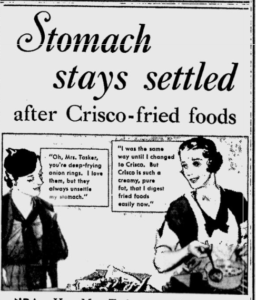 originated in the heart of American Universities. In order for these large food companies to push their products as safe to consume to the government and the masses of American culture, they needed clinical studies. Companies like ISEO, Best Foods and others pay reputable scientists at reputable universities/institutions large amounts of money to conduct studies that will give positive test results making their products so-called safe to purchase and consume.
originated in the heart of American Universities. In order for these large food companies to push their products as safe to consume to the government and the masses of American culture, they needed clinical studies. Companies like ISEO, Best Foods and others pay reputable scientists at reputable universities/institutions large amounts of money to conduct studies that will give positive test results making their products so-called safe to purchase and consume.
Listen to the words of Gerald McNeil, who conducts research for the edible-oils giant Loders Croklaan, “Let’s say I am a big margarine company, and I want to make a health claim about my product. The company would look for one of the nutrition’s elite: a university professor who is well connected to at the AHA or NIH, and fund him or her to conduct a trial. You can be absolutely sure, for two hundred and fifty thousand dollars, that you are going to get the results that you want!” This type of research funding usually have positive results compared to those without such funding. To top it all off, the industry pays academic researchers their travel expenses and an honoraria for speaking at their conferences. Who would not avoid taking this kind of manipulative bribery? Free travel, free food, academic recognition and free lodging, sign me up!
The Big Food Industry continues to make products with bad alternative fats/oils and uses manipulative labeling like, “trans fat free” to persuade us into thinking that their products are safer than natural fat sources and uses distorted scientific studies to affirm their safety. They continue to influence governmental groups like the AHA, NIH, USDA and FDA.
Besides these fat substitutes, another product made to be a substitute for natural fats and to support the Diet-Heart hypothesis is refined polyunsaturated vegetable oils (corn, cotton, canola, soybean, etc). These types of oils have been shown to lower LDL-cholesterol, therefore, the common sense logic is that these oils are safer to consume. So the dietary recommendations have been to eat higher amounts of these fats and reduce natural saturated fats. What many people do not know is that these oils are refined and have detrimental effects to our bodies at the cellular level. We should not be consuming them!
As a side note, so-called “fat free” products are just as bad. They have a tendency to have loads of sodium in them and other harmful ingredients. Stay away from them as well.
What you have come to see thus far is a history concerning dietary fat that has been developed using financial power, distorted scientific studies, government agencies lack of questioning, political gymnastics and market manipulation to the masses. This entire historical process is not the fault of the general public but we must be informed of this process. Let’s continue on!
Fats & Their Function
What are fats? 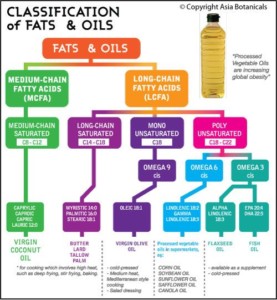
Fats come in different shapes and sizes. Fats are made up of fatty acid molecules that are shaped like a caterpillar and are comprised of a fatty chain and an acid chain. The fatty chain is a water-insoluble, oil-soluble, non-polar chain of various lengths and is made up of carbon and hydrogen and ends in a methyl (-CH3) group. The acid chain is a water-soluble, polar, weak organic acid and is known as a carboxyl (-COOH) group.
What are the general functions of fat?
- They are the building blocks of all fats and oils (lipids) in our food and body.
- The main components in neutral fats (triglycerides) carried in our bloodstream.
- The main components found in our fat cells in our bodies which is important for energy production or stored energy.
- The main components of membranes that surround our cells and within our cells (phospholipids and membranes).
- Play key roles in the construction and maintenance of all healthy cells.
What are the different types of fat and their specific traits and functions?
Type 1 Saturated Fat
- The simplest of all the fatty acids.
- They are straight and have no kinks, so they are straight bodied like caterpillars.
- Have a higher melting point because they consist of sticky molecules (solid at room temperature).
- Consist of short, medium and long fatty acids (butter and coconut oil consists of short and medium chains, while red meat, pork, mutton, dairy products and other food sources contain long chain fatty acids).
- Energy production is their main health benefit.
- Loaded with hydrogen molecules (can effect the pH balance of our bodies).
- Carry no electrical charge (may impact cellular health when consuming too much, like causing our platelets in the blood to stick together, aka “sticky blood”).
Type 2 Unsaturated Fat: monounsaturated fat and polyunsaturated fat (Essential Fatty Acids)
- Look like bent caterpillars.
- Melt at lower temperatures, unlike saturated fatty acids
- Carry a negative charge which allows for the cellular charge at the surface of our cells to disperse from one another; rather than, stick together aka “sticky blood.”
- Made up of monounsaturated and polyunsaturated fats.
EFA’s (Essential Fatty Acids)
- Must obtain from food because our bodies do not produce them.
- They attract oxygen.
- Absorb sunlight.
- Carry negative charges and helps to cells to repel one another (keeps membranes fluid).
- Cellular dispersion allows for greater nutrient absorption, cellular detoxification of biological organs (i.e. skin, liver, lungs, intestines, etc).
- Their negative charge makes them weakly basic (slightly alkaline; rather than, acidic).
- Assists in pH balancing the body.
- Allows for one way movement of electrons and energy in molecules to take place (life depends on this one way movement). Allows for the production of ATP in the mitochondria in our cells.
- Increase cellular charge to maintain healthy nerve, brain, muscle, heart and membrane functions.
- Sensitive to heat, oxygen and light. Oxidizes quicker than saturated fats.
- Good for brain cells, nerve endings (synapses). sense organs, adrenal glands, sex glands, and all cells.
Type 3 Triglyceride Fats
- Main kind of body fat.
- All fats and oils are mixtures of triglycerides.
- Make up 95% of the fat we eat.
- Most of the stored fat we carry in our bodies is composed of TG’s.
- TG’s are carried in our bloodstream (when we eat bad sugar, it turns into saturated and triglyceride fat).
- TG’s can be long or short.
- TG’s burn short chain saturated and monounsaturated fats and preserve essential fatty acids (EFA’s) for more important structural and metabolic functions in the body.
- TG’s provide insulation to our bodies.
- TG’s provide a safety mechanism for our body.
- TG’s are fuel for our organs (except the brain which utilizes metabolized glucose for energy).
- TG’s stores in our body’s reserves of EFA’s.
- High blood TG’s can cause health issues: hight TG’s derive from overeating, too many saturated fats, refined sugars and consuming few antioxidants.
- High TG’s oxidize and damage arteries (organs).
- High TG’s have been linked to cardiovascular disease, high blood pressure, heart and kidney failure, cancer and other degenerative diseases.
Type 4 Phospholipids and Membranes
- Aka “phosphatides” which is a major class of lipids besides triglycerides.
- Make up less than 5% of total lipids found if foods and in our body.
- Major structural components of cells and intracellular membranes in all living organisms.
- PL’s form double-bond membranes which is the skin that surrounds every living cell of all organisms (bacteria, plants, animal and humans).
- PL’s help our membranes keep what is outside the cell outside, and what is inside the cell inside.
- PL’s determine what can be pulled into our cells from the outside and what is inside the cell to be pushed out.
- PL’s help hold protein in place in membranes to fulfill structural, enzymatic and transport functions.
- PL’s fluidize cell membranes enabling proteins to move freely around the surface of the cell to perform vital functions.
- PL’s also store each cells supply of EFA’s that assist in cellular activity.
- PL’s help protect our cells from foreign invasion since they help store EFA’s that attract oxygen while discouraging bacteria fungi (candida) and viruses from causing harm to our cells.
The thing about fat is that all these types have their place when it comes to staying healthy and preventing disease. The goal of this section is to show you that fat is not your enemy; but your friend. That fat is vital for health, vitality, proper biological function, cellular integrity, etc. The most important thing to remember while consuming fats/oils is the source of fat, how much you are consuming of each type, and whether or not you are breaking them down and utilizing them efficiently. This is important because without the proper digestion of fats in the intestinal tract it will lead to a decrease in energy, make the blood and tissues more acidic, and cause many other metabolic issues over time.
Negative Health Effects vs Positive Health Effects
Unhealthy Fats, their negative health effects and food sources:
This article has already mentioned some unhealthy fats like:
- partially hydrogenated oils
- hydrogenated oils
- trans fats
- refined polyunsaturated vegetable oils (corn, cotton, canola, soy)
These fats are found in baked goods, candy, boxed foods, canned foods, frozen foods, and other numerous foods in the grocer areas of your local food store and other food retailers. The polyunsaturated vegetable oils are also “genetically modified,” and the damaging health effects are slowly being discovered by scientists, however, some scientists would say they are safe, but that is built on what makes political and economic sense for the food and agricultural industry. What drives these industries are cheap costs to produce, accelerate mass production, shelf-life stability and profit. Your health is not at the fore-front regarding the manufacturing of these fats/oils.
Other unhealthy fats:
- Conventional meats of all sorts
- Pasteurized non-organic dairy products
- Pasteurized non-organic butter
The three categories just mentioned may surprise you some because this article gives the impression that meat, butter and dairy products are safe to consume. The answer is yes and no. Yes, so long as they are from organic and/or wild sources but more on this later. No, because conventional methods of farming and processing of these food sources alters the fatty acid content of these foods, along with, other molecular changes that are detrimental to our health.
More unhealthy fats that are non-organic and not certified: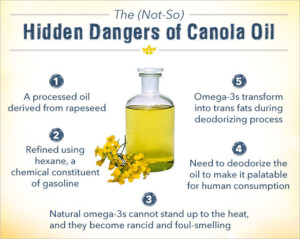
- nut oils
- fruit oils
- vegetable oils
- seed oils
They are expeller pressed, bleached, solvent extracted (the use of hexane), de-gummed, refined, deodorized, etc. All these processes de-nature these fat sources and have deleterious effects in our bodies.
High consumption of all these fats in each particular category causes a plethora of negative health effects at the biochemical and molecular level in our bodies.
Let’s give an abbreviated list of these negative health effects:
- Refined polyunsaturated fats increase omega 6 levels in blood and will cause systemic inflammation in the body. Most people consume too many omega 6’s daily and not enough omega 3 fatty acids to combat essential fatty acid imbalances.
- These fats cause a build up of hydrogen in the body that causes low energy levels and increases the risk of diseases.
- Poor development in our children.
- Sexual dysfunction.
- Damages DNA.
- Increases the rate of oxidation in the body that increases aging.
- Increases your risk of cancer since these fats are carcinogenic.
- Disrupt cell function at the membrane level.
- Causes red blood cells to stick together (the food sources that are partially hydrogenated, hydrogenated and contain trans fats).
- Causes poor digestion in the intestines since they are lipase deficient and the body stores these partially digested fat molecules in fat cells and tissues throughout the body. One ramification of this process is weight gain.
- Decrease immunity.
- Increases risk of high blood pressure.
- Increases risk of heart disease(s).
- Effects insulin levels.
- Causes hormone imbalances.
- Causes poor gland function.
- May increase mental health related symptoms.
- Makes the blood and tissue in the body acidic.
The tragedy is that some of these fats have been able to be sold in the marketplace as early as 1911. The government, medical industry and the food and nutrition industries have all bought into the idea that these fats are safer alternatives and all for the sake of profit and twisted scientific research. A nutrition paradigm built on pseudo-science! These molecules need to be put on trial and become banned in America, however, the FDA and USDA have not made the decision to do so and these fats are killing us prematurely.
Healthy fats, their positive health effects and food sources:
We will explore each fat category like we did in section 2, with the exception of triglycerides, to give you an idea of what fats are good to consume. The lists provided are not exhaustive but will give you a good head start when it comes to what to shop for. Keep in mind these sources should come from organic sources. Some of these fat sources should be consumed in smaller amounts and others at higher amounts to ensure we are maximizing the health benefits of consuming healthy fats.
This section will hopefully help you to see that healthy fat is your advocate and not an enemy, the fats spoken above are the ones to avoid.
Saturated Fats
Short-chain to medium-chain Saturated Fats
- Raw Organic Butter (the amount is open for debate but try not to exceed more that 1 tbs per day but many need less).
- Raw Extra Virgin Coconut oil (1 tbs. max for most, but athletes can get away with 2 tbs. per day).
- Raw Organic Ghee (similar to butter, again 1 tbs. per day but this is stretching it some).
The reason these fats need to be consumed in their raw form goes back to digestion. Raw fats have the ability to breakdown themselves in the digestive system, without a whole lot of digestive assistance by the pancreas. These raw fats will be able to be completely broken down, burned for energy and prevent their accumulation in the body that can have toxic effects in the body over time.
The short-chain and medium-chain fatty acids in these food sources allows for their fast digestion in the digestive tract. The raw coconut oil can be used prior to working out for an added energy boost for those working out or competing in competition.
Keep in mind that they are still filled with hydrogen, that is why they are called saturated fats, so too much of it, will reduce the absorption of other healthy fats we will discuss shortly.
Long-chain Saturated Fats
- Organic Farm Raised Beef
- Organic Mutton
- Organic Raw Dairy Products
 Some of these just mentioned, along with, other types of animal proteins are consumed after the cooking process. When you cook animal foods, they lose their ability to breakdown completely when we consume them. They lose their endogenous enzymes that would allow for the fats and proteins to be broken down. When you consume organic grass fed beef and organic dairy, you must take supplemental digestive enzymes with it- preferably plant based, broad spectrum enzymes as they assist the pancreas. This will allow you to break down the animal fats and proteins so you can utilize it for energy.
Some of these just mentioned, along with, other types of animal proteins are consumed after the cooking process. When you cook animal foods, they lose their ability to breakdown completely when we consume them. They lose their endogenous enzymes that would allow for the fats and proteins to be broken down. When you consume organic grass fed beef and organic dairy, you must take supplemental digestive enzymes with it- preferably plant based, broad spectrum enzymes as they assist the pancreas. This will allow you to break down the animal fats and proteins so you can utilize it for energy.
Phospholipids
- Egg Yolks (sunny-side up prepared eggs).
- Raw Organic Sunflower Seeds (1/4 cup).
- Pharmaceutical Grade Krill Oil (Core EFAs– 2 to 4 caps per day).
The great thing about these food sources is that they are great brain foods! Brain cells consists of phospholipids in and around their membranes. This type of fat will only enhance proper brain function.
Krill oil in particular has the ability to assist in breaking down partially hydrolyzed (digested) fats in the bloodstream, so they can be utilized as energy. What a great way to help clean out those arteries!
The raw sunflower seeds and Core EFAs will help to: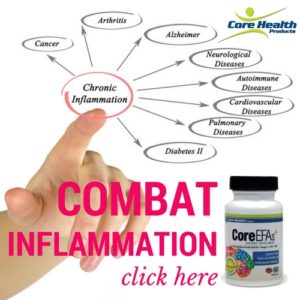
- Increase cellular separation.
- Increase cellular charge.
- Create a slight base in the cells to assist in pH balancing the body.
- Increase cellular fluidity.
- Keep the good stuff in our cells and the bad stuff out (pathogens).
Unsaturated Fats: Monon-unsaturated (omega 9), polyunsaturated (omega 6) and super-unsaturated (omega 3) fats
Mono-unsaturated Fats (Omega 9):
- Raw Avocado’s (1 per day).
- Organic Extra Virgin Olive Oil (1 to 2 tbs. per day). (Certified by the COOC “California Olive Oil Council”).
We must keep the consumption of mono-unsaturated fats to a minimum. They are healthy fats because of their chemical structure but ingesting too many of these fats will lead to EFA (Essential Fatty Acid) deficiency.
These fats will:
- Increase cellular malleability.
- Increase cellular charge for optimal organ and nerve function.
- Create a slight base in our cells to assist in pH balancing the body.
- Increase nutrient absorption.
- Help increase energy with the production of ATP in our mitochondria.
For many years, people have been cooking with olive oils as a so-called healthier alternative than saturated fats. However, unsaturated fats are oxygen, light and heat sensitive and go rancid when used to cook with. It is recommended that you use the Extra Virgin Olive Oil over salads, dressing recipes or on foods that have had time to cool to ensure the oil remains healthy.
Believe it or not, the consumption of olive oil has only been around since the 19th century. It was mainly used for external use, so some of us may not have the capacity to digest these fats well, so eating them raw and unheated will assist in that digestive process and prevent any potential health hazards.
Polyunsaturated Fats (Omega 6)
- Raw Pumpkin Seeds (1/4 cup).
- Raw Sunflower Seeds (1/4 cup).
- Raw Walnuts (1/4 cup).
- Majority of raw seeds and nuts contain an abundance of omega 6 fatty acids.
- Evening Primrose Oil (depends on blood work and how much you need to take, however, this oil is taken in supplement form for women most of the time).
- Borage Oil (depends on blood work).
- Black Current Oil (depends on blood work).
The health benefits of these omega 6 rich foods and supplements are:
- Increase cellular charge for healthy nerve and organ function.
- Increase cell to cell separation (cells are more malleable).
- Balances Hormones.
- Assists in pH balancing the body creating a slight base at the surface of cell membranes.
- Detoxification of our organs.
- Assists in the production of ATP in the mitochondria to enhance energy levels.
- Many other health benefits.
Just like mono-unsaturated fats (omega 9), polyunsaturated fats (omega 6) need to be in proper ratio with super-unsaturated fats (omega 3). The ratio between omega 6:omega 3 is 4:1. We are consuming entirely too many omega 6’s so the current ratio for the average American for omega 6:omega 3 consumption is 20:1; rather than, the 4:1 just mentioned.
While these fats are healthy, the over-consumption of omega 6’s and not enough omega 3’s are causing systemic inflammation in our bodies. This is why it is important to avoid eating too many raw nuts and seeds, and supplemental products containing high amounts of omega 6’s to prevent this from happening.
Omega 6’s are essential for the body and we need them but cutting back on them is important. We consume too many so-called healthy junk foods like chips that are cooked in omega 6 rich oils which is one of many examples as to why this 20:1 ratio is true for the average American’s daily fat intake. The body needs a delicate balance of nutrients, even with healthy sources of fat.
Super-unsaturated Fats (Omega 3’s):
- Chia seeds (1 tbs. per day).
- Raw-Organic Cold-Pressed Flax Oil (1 to 2 tbs. per day).
- Wild Caught Salmon
- Raw Pumpkin Seeds (1/4 cup, they have small amounts of omega 3’s).
- Raw Walnuts (1/4 cup, they have small amounts of omega 3’s).
- Raw-Organic Cold Pressed Hemp Oil (1 to 2 tbs- The best food ratio between omega 6 and omega 3 fatty acids).
- Cold Water Fish (Northern Marine Animals that feed on krill, copepods, algae and plankton).
- Pharmaceutical Grade Fish Oils (2 grams per day, some take up to 6 grams per day).
- Psyllium seeds (1 tbs on salads or shakes).
Health Benefits Consuming Super-Unsaturated Omega 3 Fatty Acid:
- Increased oxygen levels in the blood.
- Increased nutrient absorption in our cells.
- Maintains optimal organ health.
- Balances body pH at the cellular level because of its slightly base and slightly negative cellular charge.
- Increases immunity.
- Assists in cellular detoxification to rid cells of toxins.
- Increases cellular malleability.
- Helps with the production of ATP in our mitochondria, therefore, creating an aerobic metabolic environment that prevents disease.
Choosing the Right Omega 3 for You
Is it pharmaceutical grade? This is important because so many products on the market contain heavy metals, fillers, coloring’s and rancid oils. Most of these products are found in convenience stores like CVS, Walgreens, Wal-Mart, etc. They are also found in nutrition stores like GNC. Even if the label says, “doctor recommended” and does not say, “pharmaceutical grade”, then it’s no good. Companies can financially get physicians or any other health individual or group to say what it needs to so they can persuade you to buy their products.
Does the product have a proper balance between omega 6’s and omega 3’s? Products have an abundance of omega 3’s and may not show a 4:1 ratio and its due to the fact that we are omega 3 deficient. However, taking those that are balanced more from a ratio standpoint will enable you to prevent imbalances more effectively. If you consume lots of the omega 3 food sources mentioned in section 3, this will allow to create the balance you need as well. The good news is that when you consume these foods raw, they naturally have the balance of omega 6’s and 3’s in them, so this will ensure you are creating this balance as well. Most products do contain the 4:1 ratio or close to it.
Some products contain lots of ALA(LNA) and LA but not enough EPA and DHA, which one should I buy? Again, we are so deficient in omega 3’s that some products that have an abundance of omega 3’s and not a lot of omega 6’s will not cause a problem, so long as, you do not consume a tremendous amount of it. You want to ingest different sources of good EFA’s (Essential Fatty Acids) because they all have health benefits. Diversity is key!
Do they need to be refrigerated or not? This really depends on what product you get. For example, flax oil should be refrigerated to ensure that it will not go bad when you get it in dark bottles that are refrigerated. Most of the products on the market do not need to be refrigerated because they are in capsule form, but you do want to keep them in a cool-dry place. Also, away from heat and light since that will enhance their oxidation rate. This is why many manufacturers are using bottles that do not let light in.
How much should I be taking daily? There are blood tests out there that can provide you with your current levels to help determine what your specific needs are, however, many insurances and doctors do not pay or test for them. These tests are done by functional medical doctors and other alternative health practitioners. The out of pocket cost for the blood work may be high but its worth it. This is still optional for you.
What should I be looking for on the label?
Flax Oil: Cold-pressed, USDA organic. Make sure it’s refrigerated and in a dark bottle to make sure it stays fresh longer and is not exposed to light and heat.
Fish Oils: Pharmaceutical Grade, refrigeration is not necessary. Look for EPA and DHA with a minimum of a total of 2 grams per serving. In dark bottles will allow the product to stay more potent longer. Also, phospholipid, LNA and LA sources are good as well.
Should their be an expiration date on the bottles? Yes, make sure you take the product in the time frame before it expires. For example, some companies that make flax oil give the date it was produced and the expiration date. So consume them before they expire. Most companies provide an expiration date.
This article has been a long one, however, the hope is that you learned a lot and are now able to eat healthy fats as a part of your healthy lifestyle. Eating the bad fats and not enough of the good fats is a part of why so many people are sick today. Congratulations on plowing through all this information! Fat is no longer your enemy but instead, your friend!

To life, health, longevity and happiness!!
John Nardozzi
Enzyme Nutritionist & Blog Writer
Bibliography
Erasmus, Udo. Fats that Heal, Fats that Kill. Burnaby BC, Canada. Alive Books, 1993.
Howell, Edward Dr. Enzyme Nutrition:The Food Enzyme Concept. Wayne, New Jersey. Avery Publishing Group Inc., 1985.
Santillo, Humbart, N.D. The Power of Nutrition with Enzymes:First Edition. Carlsbad,CA. Designs for Wellness Press, 2010.
Teicholz, Nina. The Big Fat Surprise. New York, N.Y. Simon and Schuster Paperbacks, 2014.
Also, a big thank you to Liz and Chris Bailey, who continue to offer sound nutrition perspectives when I write these health articles. I, John Nardozzi, appreciate the ongoing dialogue. They both keep me challenged and sharp! Their friendship is cherished beyond measure!
Thanks again to Shan Stratton for his encouragement and support of me writing for his great company Nutrabrand Labs!
Lastly, thanks to all our readers! You all are the reason why we strive for excellence in nutrition education! You are the fuel that keeps our passion for educating on nutrition going! For that, we like to thank you all!


